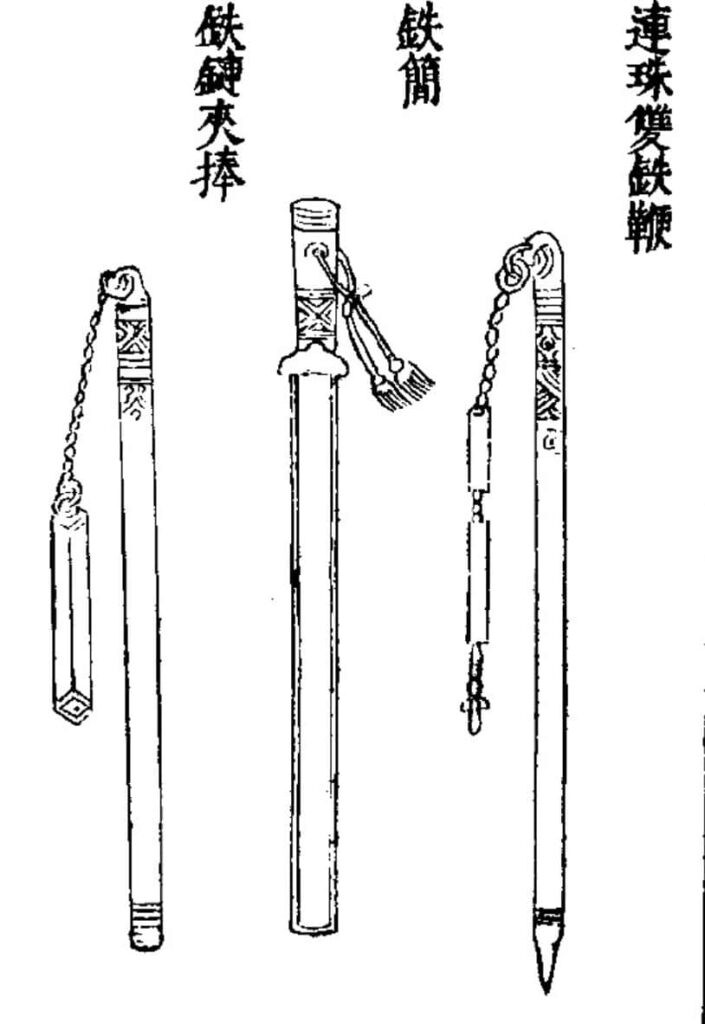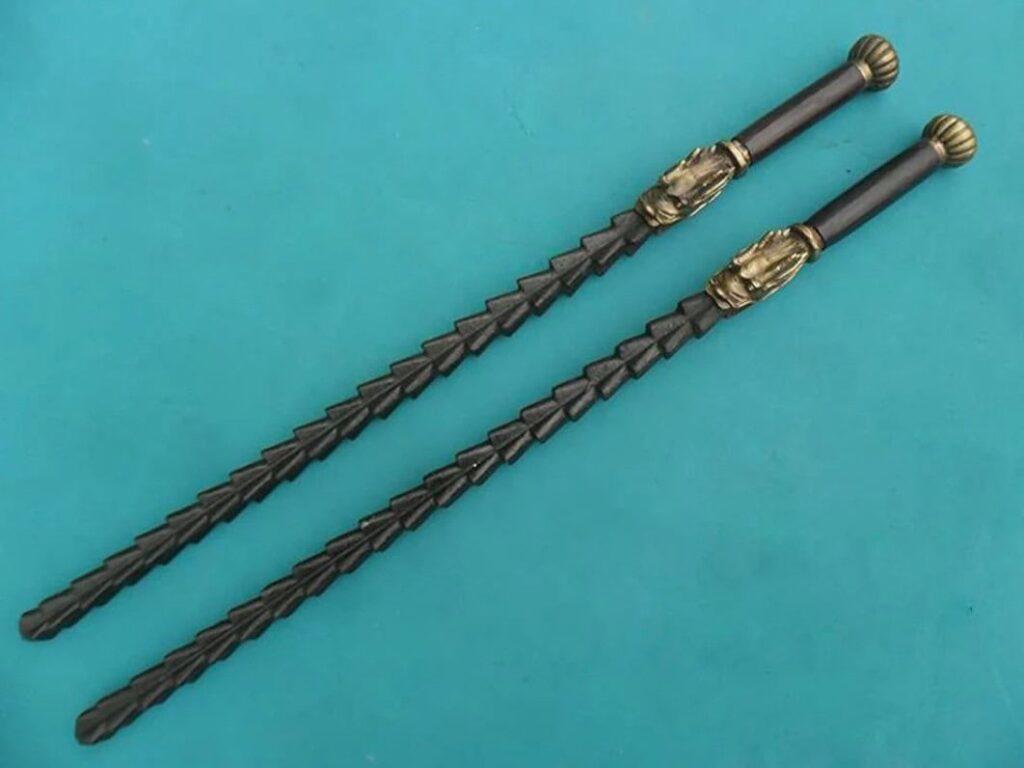What is a Chinese Sword Breaker?
TLDR: The Chinese sword breaker is a heavy, quad-edged weapon designed to break blades and deliver powerful strikes in combat. Known for its unique construction, it combines the striking power of a mace with the reach of a sword.
The Chinese sword breaker is a weapon that never fails to captivate my imagination. With its unique rectangular cross-section and sharp edges, it stands out among the vast array of Chinese weaponry. Every time I come across information about this fascinating tool, I’m struck by its ingenious design that allowed warriors to not only defend against enemy blades but also potentially break them. The more I learn about the sword breaker’s history and combat applications, the more I appreciate the strategic thinking behind its development.
Historical Origins of the Chinese Sword Breaker
The historical origins of the Chinese sword breaker can be traced back to ancient China, with its development closely tied to the evolution of warfare and weaponry in the region. While the exact date of its inception remains unclear, the Chinese sword breaker emerged as a unique weapon designed to counter the prevalence of swords on the battlefield.
Early development of the Chinese sword breaker likely began during the late Spring and Autumn period (771-476 BC) or the subsequent Warring States period (475-221 BC). During this time, iron and steel production was advancing, leading to the creation of more sophisticated weapons. As swords became increasingly common among soldiers, there arose a need for specialized tools to counter them effectively.
The Chinese sword breaker evolved from simpler blunt weapons and truncheons. Its design was likely influenced by existing weapons such as maces and clubs, but with modifications specifically intended to combat swords. The rectangular cross-section with sharp corners was a key innovation, allowing the weapon to focus its impact and potentially damage or disable an opponent’s blade.
Physical Characteristics of the Chinese Sword Breaker
The physical characteristics of the Chinese sword breaker set it apart from conventional swords, making it a unique and formidable weapon. The most distinctive feature is its rectangular cross-section, which gives the weapon its characteristic shape and functionality. This design allows the sword breaker to concentrate force along its edges, maximizing impact when striking an opponent’s weapon or armor.
One of the key elements of the Chinese sword breaker’s design is the hollow ground “flats” along its length. These grooves not only reduce the weapon’s weight without compromising its strength but also create sharp edges along the corners. The combination of the rectangular cross-section and hollow ground flats results in four distinct edges running the length of the blade, each capable of delivering devastating blows or catching an enemy’s blade.
The sharp corners and edges of the Chinese sword breaker are crucial to its effectiveness. These features allow the weapon to focus its impact, potentially damaging or even breaking an opponent’s sword. The acute angles formed by the intersection of the flat surfaces and the hollow ground areas create points of concentrated force, enhancing the weapon’s ability to penetrate armor or deflect incoming attacks.
| Type | Overall Length | Blade Length | Weight |
| Large tie jian | 97 cm (38 in) | 79 cm (31 in) | Varies |
| Qing-dynasty tie bian | 103 cm (40.5 in) | ~80 cm (31.4 in) | >2 kg (4.4 lbs) |
| Two-handed versions | Similar to miao dao | Longer than one-handed | Heavier |
Types of Chinese Sword Breakers
The Chinese sword breaker, a unique weapon in the arsenal of ancient Chinese warriors, comes in several distinct types, each with its own characteristics and uses. The two primary categories are the tie jian (iron rod) and the tie bian (iron whip), with two-handed versions also existing for specialized applications.
The tie jian, or iron rod, is characterized by its smooth, angular rod, typically with a rectangular or square cross-section. This design allows for concentrated force upon impact, making it effective at damaging or potentially breaking enemy weapons. The tie jian often features hollow ground facets along its length, which not only reduces weight but also creates sharp edges capable of delivering devastating blows. Its design evolved over time, with later versions incorporating a slight taper towards the tip for improved balance and striking power.
In contrast, the tie bian, or iron whip, features a distinctive bamboo-sectioned rod. This segmented design is believed to enhance the weapon’s ability to grip armor or other weapons upon contact, preventing them from sliding off during strikes. The tie bian can have either a round or angular cross-section, offering versatility in combat applications. Its segmented nature may have also provided some flexibility, allowing for whip-like strikes that could wrap around an opponent’s guard.
Two-handed versions of Chinese sword breakers were particularly popular during the Ming dynasty for military use. These larger weapons offered increased reach and striking power, making them formidable on the battlefield. They were often comparable in size to the Chinese long sword (miao dao), allowing for similar techniques to be applied in combat.
| Type | Rod Design | Cross-Section | Typical Use |
| Tie jian | Smooth | Rectangular/Square | General combat |
| Tie bian | Segmented | Round or Angular | Armor penetration |
| Two-handed | Varies | Larger versions of above | Military engagement |
Combat Applications of the Chinese Sword Breaker
The combat applications of the Chinese sword breaker showcase its versatility as a formidable weapon in ancient Chinese warfare. One of its primary functions was to break or damage enemy weapons, particularly swords. The rectangular cross-section with sharp corners allowed the wielder to concentrate force upon impact, potentially shattering or severely damaging an opponent’s blade. This technique required precise timing and angle of attack, often targeting the flat of the enemy’s sword to maximize the chance of breaking it.
As a bludgeoning weapon, the Chinese sword breaker excelled due to its solid construction and concentrated mass. The weapon’s design allowed for powerful strikes that could easily penetrate armor or cause significant blunt force trauma. Its effectiveness as a bludgeon made it particularly useful against heavily armored opponents, where sharp blades might be less effective.
Interestingly, some variants of the Chinese sword breaker were also used as throwing weapons. This technique, known as “sa shou jian” (撒手鐧), involved casting the weapon at an opponent from a distance. The balanced design and weight distribution of the sword breaker made it suitable for accurate throws, potentially catching enemies off guard.
The integration of the Chinese sword breaker with other Chinese martial arts demonstrates its versatility in combat. Techniques for wielding the sword breaker often drew from sword forms, particularly those of the Chinese long saber (miao dao). This allowed practitioners to seamlessly incorporate the weapon into existing martial arts styles, enhancing their combat effectiveness.
| Application | Description | Primary Advantage |
| Weapon breaking | Targeted strikes to damage blades | Disarms opponents |
| Bludgeoning | Heavy strikes for blunt force trauma | Effective against armor |
| Throwing | Ranged attacks using “sa shou jian” | Surprise element |
| Martial arts integration | Incorporation into existing forms | Versatility in combat |
Historical Use of the Chinese Sword Breaker
The historical use of the Chinese sword breaker reveals its significant role in ancient Chinese warfare. This unique weapon, known as tie jian (iron rod) or tie bian (iron whip), was employed for its versatility and effectiveness in combat. In ancient Chinese battles, the sword breaker served as a formidable tool for disarming opponents and breaking through enemy defenses.
Elite forces, such as the Jian Rui Ying army of the Qing dynasty, prominently featured the Chinese sword breaker in their arsenal. This specialized unit was trained to overcome fortifications and employed a variety of weapons, including large tie bian (iron whips) alongside maces, long spears, and firearms. The inclusion of the sword breaker in the equipment of such an elite force underscores its tactical importance and effectiveness in military operations.
When compared to other Chinese weapons, the sword breaker occupied a unique niche. Unlike conventional swords or sabers, it combined the striking power of a mace with the reach and maneuverability of a sword. However, its greater weight made it slower to wield than bladed weapons, requiring more strength and endurance from the user. This trade-off between power and speed positioned the sword breaker as a specialized weapon for specific combat scenarios.
Key characteristics of the Chinese sword breaker in warfare:
- Ability to damage or destroy enemy weapons
- Effectiveness against armored opponents
- Use in elite military units for specialized operations
- Combination of striking power and reach
Final Thoughts
As I delve deeper into the world of Chinese sword breakers, I’m continually amazed by their complexity and historical significance. From their origins to their various applications in combat, these weapons offer a unique window into the martial culture of ancient China. While I may not be an expert, I find myself constantly intrigued by the skill required to wield such a specialized tool effectively.


